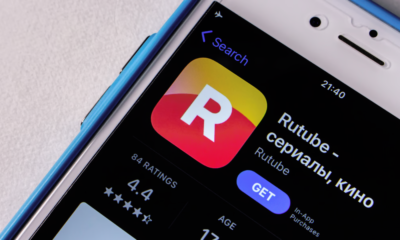Technology
What is an IoT Developer Responsible For: Key Roles Explained

The Internet of Things (IoT) has revolutionized the way devices connect, communicate and function. From smart homes to industrial automation, IoT technology plays a pivotal role in shaping the modern world. But behind the seamless operation of IoT devices lies the expertise of IoT developers. These professionals are the backbone of IoT projects ensuring that devices work efficiently, securely and reliably What is an IoT Developer Responsible For.
In this article we will explore what an IoT developer is responsible for diving into their key roles, required skills, and contributions to the IoT ecosystem. Whether you’re curious about IoT development as a career or want to understand its significance in the tech industry, this guide provides all the insights you need.
Understanding the Role of an IoT Developer
An IoT developer is a specialist who designs, develops, and maintains the software, hardware, and systems that power IoT devices. They work to ensure seamless connectivity, functionality, and integration between devices, networks, and platforms.
Core Responsibilities
Device Development: IoT developers oversee the production of sensors, actuators, and other connected devices.
Software Programming: They write code that allows devices to function autonomously or connect with other systems.
System Integration: IoT developers ensure compatibility between devices and platforms, often using cloud-based technologies.
Testing and Debugging: Rigorous testing ensures the reliability and security of IoT devices.
Data Management: They manage the flow of data from devices, ensuring it is stored, processed, and interpreted effectively.
Security Implementation: Protecting devices and networks from cyber threats is a critical aspect of IoT development.
Key Areas of Responsibility
IoT development spans multiple disciplines, requiring a diverse skill set and collaboration with various professionals. Below are the key areas of responsibility for an IoT developer:
Hardware Design and Development
IoT developers are involved in designing and building physical devices. This includes selecting sensors, actuators, and microcontrollers that form the core of IoT systems.
- Designing devices to meet specific use cases.
- Ensuring low power consumption for battery-operated devices.
- Incorporating connectivity modules like Wi-Fi, Bluetooth, or Zigbee.
Software Development
The software in IoT devices is what enables them to perform tasks, connect to networks, and exchange data. IoT developers write embedded software that runs on microcontrollers and interfaces with hardware components.
- Programming in languages like C, C++, or Python.
- Developing firmware to control device functions.
- Writing drivers to enable communication between hardware and software.
Connectivity and Networking
IoT systems rely on robust connectivity to function effectively. IoT developers handle the integration of communication protocols and ensure devices can connect to the internet and other systems.
- Implementing network protocols such as MQTT, CoAP, or HTTP.
- Configuring devices to communicate via Wi-Fi, cellular, or LPWAN networks.
- Optimizing data transmission for low-latency and high-reliability applications.
Cloud Integration
Many IoT devices interact with cloud platforms to process and store data. IoT developers ensure smooth integration with cloud services to enable remote monitoring and control.
- Setting up APIs for data exchange between devices and the cloud.
- Using platforms like AWS IoT Core, Google Cloud IoT, or Azure IoT Hub.
- Ensuring real-time data synchronization and access.
Data Processing and Analytics
IoT developers play a role in managing the data collected from devices, often working with data analysts to ensure actionable insights.
- Creating pipelines to process and organize data.
- Implementing edge computing solutions for real-time analysis.
- Ensuring data quality and integrity during transmission.
Security and Compliance
Security is a top priority in IoT systems due to the high risk of cyberattacks. IoT developers incorporate robust security measures into devices and networks.
- Encrypting data transmissions to prevent unauthorized access.
- Implementing secure boot and firmware updates.
- Ensuring compliance with industry standards and regulations.
Skills Required for IoT Developers
Being an IoT developer requires a blend of technical expertise and problem-solving skills. Below are the essential skills for excelling in this role:
Technical Skills
Programming Languages: Proficiency in C, C++, Python, or Java is crucial for software development.
Hardware Knowledge: Familiarity with microcontrollers, sensors, and circuit design is essential for device development.
Networking: Understanding of communication protocols like MQTT, CoAP, and HTTP.
Cloud Platforms: Experience with AWS, Google Cloud, or Azure for cloud integration.
Embedded Systems: Expertise in developing firmware and drivers for IoT devices.
Soft Skills
Problem-Solving: Ability to troubleshoot and resolve technical issues effectively.
Collaboration: Working with data analysts, engineers, and other stakeholders to deliver cohesive solutions.
Attention to Detail: Ensuring accuracy in coding, testing, and system design.
Adaptability: Staying updated with evolving IoT technologies and standards.
Industries That Rely on IoT Developers
IoT development has applications across diverse industries, highlighting the significance of IoT developers in driving innovation and efficiency.
Smart Homes
IoT developers design systems for smart lighting, thermostats, and security cameras that enhance convenience and energy efficiency.
Healthcare
Developers create IoT devices for remote patient monitoring, wearable health trackers, and smart medical equipment.
Manufacturing
Industrial IoT (IIoT) involves automating factories with connected sensors and machines for increased productivity.
Agriculture
IoT applications in agriculture include smart irrigation systems, weather monitoring devices, and crop health sensors.
Transportation
IoT developers contribute to connected vehicles, fleet management systems, and real-time traffic monitoring.
Challenges Faced by IoT Developers
IoT development is a dynamic field that presents unique challenges. Understanding these challenges helps developers devise better solutions.
Interoperability Issues
Ensuring compatibility between devices from different manufacturers can be complex.
Data Privacy Concerns
Protecting sensitive data from breaches and unauthorized access is a major challenge.
Power Management
Designing energy-efficient devices that operate for extended periods on limited power is critical.
Scalability
Developing systems that can handle increasing numbers of devices and data volumes is essential for future-proofing.
Security Threats
Addressing vulnerabilities in IoT systems to prevent cyberattacks is a continuous challenge.
Future of IoT Development
The role of IoT developers will continue to evolve as the technology advances. Emerging trends and innovations are shaping the future of IoT development.
Artificial Intelligence (AI) Integration
AI-powered IoT devices can process data locally and make decisions without human intervention.
Edge Computing
Processing data closer to the source reduces latency and improves real-time performance.
5G Connectivity
Faster and more reliable networks will enable advanced IoT applications.
Green IoT
Energy-efficient devices and sustainable practices will become a priority in IoT development.
Blockchain for IoT
Decentralized security solutions will enhance trust and transparency in IoT systems.
Conclusion
IoT developers play a pivotal role in designing and maintaining the systems that connect our devices and improve our lives What is an IoT Developer Responsible For. From hardware and software development to ensuring robust security, their responsibilities span across a wide range of tasks. As IoT technology continues to grow, the demand for skilled IoT developers will rise, making this an exciting and rewarding field for tech enthusiasts.
FAQs
What is an IoT developer responsible for?
An IoT developer designs, builds, and maintains IoT devices, ensuring their connectivity, functionality, and security.
What skills are required to become an IoT developer?
Key skills include programming, hardware knowledge, networking, cloud integration, and problem-solving abilities.
Which industries hire IoT developers?
Industries like healthcare, manufacturing, transportation, agriculture, and smart homes heavily rely on IoT developers.
What challenges do IoT developers face?
Common challenges include interoperability issues, data privacy concerns, power management, scalability, and security threats.
What tools do IoT developers use?
IoT developers use microcontrollers, programming languages like Python and C++, cloud platforms, and networking protocols.
What is the future of IoT development?
Trends like AI integration, edge computing, 5G connectivity, and blockchain security are shaping the future of IoT development.
Technology
SpyDialer: A Comprehensive Guide to Reverse Phone Lookup

In today’s digital landscape mystery phone calls and messages are a common concern. SpyDialer is a powerful tool that allows users to identify unknown callers verify contact information, and reconnect with acquaintances—all for free. By entering a phone number users can access comprehensive details about its owner helping to demystify missed calls and avoid unwanted communications.
This article will delve into the features, benefits and ethical use of SpyDialer guiding you through its functionality while addressing common questions.
What is SpyDialer?
SpyDialer is a free reverse phone lookup tool designed to help users find information about phone numbers, addresses, emails, and people. It provides a user-friendly platform for searching public records, making it easier to identify unknown callers or verify details.
SpyDialer offers four main search options:
- Reverse Phone Lookup
- Name Lookup
- Email Lookup
- Address Lookup
Key Features of SpyDialer
1. Reverse Phone Lookup
SpyDialer allows users to input a mystery phone number and identify its owner. This feature is particularly useful for avoiding spam calls or verifying the identity of unknown callers.
2. Name Lookup
Users can search for individuals by name, helping them reconnect with friends or verify personal information.
3. Email Lookup
SpyDialer’s email lookup feature enables users to verify email senders and avoid phishing scams.
4. Address Lookup
By entering an address, users can discover information about its residents or owners.
5. Voicemail Playback
Unique to SpyDialer, this feature lets users listen to voicemail greetings associated with a phone number.
How SpyDialer Works
SpyDialer gathers publicly available information and compiles it into an easily accessible database. Users simply need to:
- Visit the official SpyDialer website.
- Enter the phone number, name, email, or address they want to search.
- Select one of the four search options.
- View the detailed results provided by the platform.
Why Use SpyDialer?
Ease of Use
SpyDialer’s intuitive interface ensures that users of all technical abilities can navigate the platform with ease.
Free Access
Unlike many similar services, SpyDialer is entirely free to use, with no hidden fees or subscription requirements.
Instant Results
Users receive search results almost instantly, saving time and effort.
Privacy Protection
By identifying unknown callers or verifying email addresses, SpyDialer helps users avoid scams and maintain their privacy.
Practical Applications of SpyDialer
1. Identifying Unknown Callers
Missed calls from unknown numbers are common. SpyDialer helps users identify these callers, offering peace of mind.
2. Verifying Email Senders
Avoid phishing attempts by verifying the authenticity of email addresses.
3. Reconnecting with Old Friends
Use the name lookup feature to find contact details for old acquaintances.
4. Property Research
Gain insights into property owners or residents with the address lookup tool.
Tips for Using SpyDialer Effectively
1. Input Accurate Information
Ensure you provide accurate details for the best search results.
2. Cross-Check Information
Verify the details provided by SpyDiale’r with other sources for added accuracy.
3. Respect Privacy
Use the platform responsibly and ethically, avoiding any misuse of the data.
Ethical Considerations When Using SpyDialer
While SpyDiale’r is a valuable tool, it’s important to use it responsibly:
- Respect Others’ Privacy: Do not use the platform to invade someone’s privacy or for unlawful purposes.
- Comply with Local Laws: Ensure your use of SpyDiale’r adheres to applicable laws and regulations.
Limitations of SpyDialer
1. Data Accuracy
While SpyDiale’r uses publicly available records, its information may not always be up-to-date or accurate.
2. U.S.-Focused Service
SpyDiale’r primarily focuses on U.S.-based queries, limiting its usefulness for international searches.
How SpyDialer Protects User Data
SpyDiale’r prioritizes user privacy by ensuring that searches are anonymous and secure. The platform does not require account creation, allowing users to maintain their privacy while accessing information.
Common Misconceptions About SpyDialer
1. SpyDialer is a Tracking Tool
SpyDiale’r is not a GPS tracking tool. It simply provides publicly available information about phone numbers, names, emails, or addresses.
2. SpyDialer Collects Sensitive Data
The platform only uses information that is already publicly accessible, ensuring it complies with privacy regulations.
How to Remove Information from SpyDialer
If you wish to remove your information from SpyDialer’s database, you can request an opt-out through their website. This ensures your details remain private.
Conclusion
SpyDialer is a valuable tool for anyone looking to identify unknown callers, verify email senders, or reconnect with people. Its free and easy-to-use platform makes it accessible to all, while its commitment to privacy ensures user trust. However, like any tool, it should be used responsibly and ethically to maintain its benefits.
Whether you’re managing personal safety or simply curious about a missed call, SpyDiale’r provides a quick and efficient solution for your lookup needs.
FAQs
Is SpyDiale’r free?
Yes, SpyDiale’r is completely free and does not require registration or payment.
How accurate is SpyDialer’s data?
While SpyDiale’r relies on public records, data accuracy may vary depending on its source.
Can I use SpyDiale’r internationally?
SpyDiale’r primarily supports U.S.-based queries and may not provide comprehensive results for international searches.
Is SpyDiale’r legal to use?
Yes, SpyDiale’r operates within legal boundaries by using publicly available information.
Can I remove my information from SpyDiale’r?
Yes, users can submit an opt-out request to have their information removed from the platform.
Does SpyDiale’r work for businesses?
SpyDiale’r is designed for personal use and may not be suitable for comprehensive business needs.
Technology
Namelix: Your Go-To AI Business Name Generator

In the digital age, creating a unique and memorable name for your business is a vital step toward establishing a strong brand identity. Namelix, an AI-powered business name generator, has emerged as a reliable and innovative tool designed to simplify this process. With its intuitive interface, powerful algorithms, and ability to deliver creative results in seconds, Namelix is redefining the way businesses approach branding.
Understanding Namelix
Namelix is a free, web-based application that uses artificial intelligence to generate business names. Whether you’re launching a startup, rebranding an existing company, or brainstorming ideas for a side project, Namelix offers a comprehensive solution. The platform not only provides an extensive list of potential names but also checks domain availability, ensuring your chosen name has an online presence.
The Need for a Business Name Generator
Selecting a business name is often a daunting task. A good name should be memorable, relevant, and reflect your brand’s identity. It must also be unique enough to avoid legal conflicts and resonate with your target audience. Namelix addresses these challenges by streamlining the naming process. Instead of spending hours brainstorming or hiring expensive branding agencies, entrepreneurs can leverage Namelix’s AI to explore creative options effortlessly.
Features of Namelix
AI-Driven Creativity
Namelix uses cutting-edge machine learning algorithms to understand user preferences. By analyzing inputs such as keywords, industry, and style preferences, the AI generates names that are both relevant and imaginative.
Customization Options
Users can customize the output by selecting name styles, such as short names, compound words, or names inspired by specific languages. This ensures that the generated names align with the user’s vision and industry standards.
Domain Availability Checks
One standout feature of Namelix is its ability to check the availability of domain names. This functionality is invaluable in today’s digital-first world, where an online presence is crucial for any business.
Intuitive Interface
The platform is designed with simplicity in mind. Its user-friendly interface makes it accessible to individuals with little to no technical expertise.
Free Access
Nameli’x is completely free to use, making it an excellent choice for startups and small businesses operating on a tight budget.
How Namelix Works
Using Nameli’x is a straightforward process. Users start by entering relevant keywords related to their business. These could include the type of service offered, the target audience, or the desired brand image. Next, users select their preferred name styles and tweak settings for creativity levels. Within seconds, Nameli’x generates a curated list of potential names, complete with available domain options.
Benefits of Using Namelix
Time-Saving Solution
Nameli’x eliminates the need for extensive brainstorming sessions, providing results in seconds. This allows business owners to focus on other aspects of their venture.
Cost-Effective Option
Hiring branding consultants or agencies can be expensive. Nameli’x offers a free alternative without compromising on quality.
Enhanced Creativity
The AI-driven approach ensures that users are presented with options they might not have considered on their own.
Versatility
Nameli’x caters to various industries and business types, making it a versatile tool for entrepreneurs across different domains.
Examples of Businesses Benefiting from Namelix
Startups, freelancers, small businesses, and even large corporations have found value in Namelix’s capabilities. For example, a tech startup might use Nameli’x to generate modern, innovative names, while a boutique bakery might seek something elegant and whimsical.
Challenges and Limitations
While Nameli’x offers numerous advantages, it’s important to acknowledge its limitations. The tool relies heavily on the quality of user inputs. Poorly chosen keywords or unclear preferences may lead to less satisfactory results. Additionally, while the platform checks domain availability, it doesn’t ensure trademark clearance, requiring users to conduct further research before finalizing a name.
The Future of Namelix and AI Branding Tools
As artificial intelligence continues to evolve, tools like Nameli’x are expected to become even more sophisticated. Future iterations may include features such as multilingual support, deeper integration with branding guidelines, and enhanced trademark checking capabilities.
Tips for Maximizing Namelix’s Potential
Be specific with your keywords to guide the AI effectively.
Experiment with different name styles and creativity levels.
Use the domain availability feature to secure your online presence promptly.
Conclusion
Nameli’x is a game-changer for entrepreneurs and businesses looking to establish a strong brand identity. Its AI-driven approach, user-friendly design, and cost-free access make it an indispensable tool in the modern branding toolkit. By combining innovation with practicality, Nameli’x empowers users to create unique, memorable, and relevant business names effortlessly.
FAQs
1. Is Namelix completely free to use?
Yes, Namelix is entirely free, allowing users to generate names and check domain availability without incurring costs.
2. Can Namelix ensure trademark availability for the names it generates?
No, while Namelix checks domain availability, users must conduct separate trademark checks to ensure legal compliance.
3. What types of businesses can use Namelix?
Namelix is versatile and caters to startups, small businesses, freelancers, and even larger corporations across various industries.
4. Does Namelix support multiple languages?
Currently, Namelix focuses primarily on English names, but future updates may include multilingual capabilities.
5. Can I save the names generated by Namelix for later use?
Yes, Namelix allows users to save their favorite suggestions for future reference.
6. How does Namelix handle domain availability checks?
Namelix provides real-time domain availability information for each name it generates, simplifying the process of securing an online presence.
Technology
Solscan: A Comprehensive Blockchain Explorer for the Solana Network

The blockchain revolution has brought about numerous tools to enhance user interaction and understanding of decentralized networks. Among them, Solscan stands out as an essential platform for anyone delving into the Solana blockchain. Offering real-time insights into transactions, smart contracts, token prices, and network analytics, Solscan serves as a powerful resource for developers, investors, and enthusiasts alike. This article explores Solscan’s capabilities, its importance in the blockchain ecosystem, and how it enriches the Solana community.
Understanding Solscan and Its Role in the Solana Ecosystem
Solscan is a blockchain explorer and analytics platform designed specifically for the Solana blockchain. It functions as a window into the network, enabling users to search, view, and analyze blockchain data with ease. Solana, known for its high-speed transactions and low fees, has rapidly gained traction among developers and users. Solscan complements this ecosystem by offering a user-friendly interface for tracking and understanding on-chain activity.
As a blockchain explorer, Solscan provides detailed information about transactions, blocks, token transfers, and wallets. Its analytics capabilities further empower users to make informed decisions by analyzing trends, network activity, and the performance of decentralized applications (dApps).
Key Features of Solscan
Transaction Tracking
Solscan allows users to monitor individual transactions on the Solana blockchain. By entering a transaction ID, users can view comprehensive details, including the status, fee, block time, and associated wallets.
Block Exploration
Each block on the Solana blockchain contains a wealth of data. Solscan presents this data in an easily digestible format, showcasing block heights, timestamps, validators, and transaction counts.
Token and Market Analytics
Solscan tracks token performance, including prices, market caps, and trading volumes. This feature is particularly useful for traders and investors looking to monitor token trends.
Smart Contract Insights
For developers and blockchain enthusiasts, Solscan provides an in-depth look at smart contracts. Users can explore contract details, associated transactions, and interactions, fostering transparency and trust.
NFT and DeFi Integration
With Solana’s growing prominence in the NFT and DeFi spaces, Solscan includes features to track non-fungible token (NFT) collections and decentralized finance (DeFi) protocols. This integration makes Solscan a versatile tool for the broader blockchain community.
User-Friendly Interface
Solscan’s intuitive design ensures accessibility for both beginners and experienced blockchain users. The platform organizes complex data into clear categories, simplifying navigation and data interpretation.
The Importance of Solscan in the Blockchain Landscape
Enhancing Transparency
Blockchain technology thrives on transparency, and Solscan upholds this principle by making Solana’s blockchain data easily accessible. Users can independently verify transactions, monitor wallet activities, and scrutinize smart contracts.
Empowering Decision-Making
For investors and traders, Solscan serves as a vital resource. By providing up-to-date information on token performance, users can make data-driven decisions regarding their investments.
Supporting Developers
Developers rely on blockchain explorers to test and debug their applications. Solscan’s detailed analytics and contract insights enable developers to fine-tune their dApps and smart contracts.
Building Trust
By offering a window into the blockchain, Solscans fosters trust among users. Transparency and accountability are crucial in the decentralized world, and Solscans contributes significantly to these values.
How to Use Solscan Effectively
Searching for Transactions
To track a transaction, users can enter the transaction ID in the search bar. The resulting page displays all relevant details, including the transaction status, fees, and involved addresses.
Exploring Wallet Activities
Users can enter a wallet address to view its transaction history, token holdings, and associated activities. This feature is useful for monitoring wallet performance and activity.
Navigating Smart Contracts
Developers can use Solscans to explore and analyze smart contracts on the Solana blockchain. By entering the contract address, users can view interactions, code snippets, and related transactions.
Monitoring Market Trends
Solscan’s market analytics section provides a snapshot of token prices, market caps, and trading volumes. Users can stay updated on market movements and identify potential investment opportunities.
The Role of Solscan in the Growth of Solana
Solana’s rise as a high-performance blockchain network has been accompanied by the growing demand for reliable analytics tools. Solsca’n has become an integral part of this ecosystem by bridging the gap between blockchain data and user understanding. Its role in fostering transparency, supporting developers, and empowering users is vital for the continued growth of the Solana network.
Challenges and Future Prospects for Solscan
While Solsca’n has proven to be a valuable tool, it faces challenges as the blockchain space evolves. The rapid growth of the Solana network brings increased data volume, necessitating continuous upgrades to Solscan’s infrastructure. Additionally, maintaining user trust and ensuring data accuracy will remain ongoing priorities.
Looking ahead, Solscan’s future appears promising. With plans for expanded features, integration with other blockchain platforms, and enhanced user experiences, Solsca’n is well-positioned to remain a cornerstone of the Solana ecosystem.
Conclusion
Solscans stands as a beacon of accessibility and transparency in the fast-paced world of blockchain technology. By offering a comprehensive suite of features for tracking, analyzing, and understanding Solana’s blockchain, it caters to the needs of a diverse user base. Whether you’re a developer, investor, or curious enthusiast, Solscans provides the tools you need to navigate the Solana network confidently. As Solana continues to grow, Solscan’s role in ensuring a transparent and informed blockchain experience will only become more crucial.
FAQs
1. What is Solscan, and what does it do?
Solscan is a blockchain explorer and analytics platform designed for the Solana blockchain. It allows users to track transactions, explore blocks, analyze smart contracts, and monitor market trends.
2. How does Solscan support Solana developers?
Solscan provides detailed insights into smart contracts, transaction data, and network activity, enabling developers to test, debug, and optimize their decentralized applications.
3. Can Solscan track NFTs and DeFi activities?
Yes, Solscan includes features to monitor NFT collections and DeFi protocols on the Solana blockchain, offering users a comprehensive view of these ecosystems.
4. Is Solscan free to use?
Yes, Solscan is a free platform. Users can access its features without any cost, making it accessible to a wide audience.
5. How reliable is the data on Solscan?
Solscan sources its data directly from the Solana blockchain, ensuring accuracy and reliability for users seeking transparent and trustworthy information.
6. What sets Solscan apart from other blockchain explorers?
Solscan’s focus on the Solana blockchain, combined with its user-friendly interface, detailed analytics, and NFT/DeFi integration, distinguishes it from general-purpose blockchain explorers.

 Nail Salons11 months ago
Nail Salons11 months agoNail Salons in Ridgewood, NJ

 Topic9 months ago
Topic9 months agoEvolved Fights: Where Mixed Wrestling Meets Adult Entertainment

 Topic9 months ago
Topic9 months agoMakoshake: A Popular Model and Cam Girl

 Business9 months ago
Business9 months agoSkyWestOnline: Empowering Employees with Essential Resources

 Topic10 months ago
Topic10 months agoEmbracing the Paradox of Retroya: Where Past and Future Collide

 Uncategorized10 months ago
Uncategorized10 months agoExploring Rutube: Russia’s Dynamic Video Platform

 Technology4 months ago
Technology4 months agoTomTechBlog: Your Go-To Source for Cutting-Edge Tech News and Insights

 Topic10 months ago
Topic10 months agoFruit of the Loom: Cornucopia Logo Fact Check















